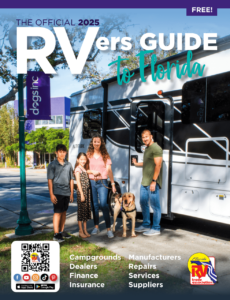Boondocking Battery Capacity
When you’re getting ready to break away from RV parks and boondocking, you will need to determine:
- What battery capacity you’ll need
- How you’ll recharge the batteries you have
- What items you’ll be powering
- How much power those items draw
Figuring Out How Much Power Your Equipment Draws
The power in a sticks and bricks house is delivered in AC or alternating current. Everything in your RV will run on direct current, or DC, from the batteries. First, find out how much power your DC items draw in AC with Ohms Law. Multiply the amp draw @ 120 by 10 to find out the DC draw. If an item draws 10 amps per hour of AC power, the equation is:
10 amps AC X 10 = 100 amps DC per hour.
You’ll need to do this conversion before you plug anything in because drawing your batteries below 50% can damage them and shorten their lives.
What Are You Powering?
Depending on what you plan to power, you may have to scale up your battery bank. Any item in your RV that generates heat or cools things down will probably take a lot of electricity. This includes everything from curling irons to air conditioners.
While there are air conditioners that run on very little power, it’s important to know which of the big power users, such as microwaves, water heaters, and space heaters, you can use at the same time while you are boondocking.

Boondocking is a great opportunity to see stars that aren’t easy to see in an RV park or near a large city.
Will You Need to Triage?
To keep your batteries at a safe level of charge, it’s probably a good idea to rank the big power using items and plan accordingly. For example, your coffee pot will draw less than 10 amps, so you want to make sure you have that available first thing in the morning. If you need a hot shower in the morning, be prepared with at least 15 amps.
For those who work on the road, this is crucial. You need the power to keep the lights on, but you also need computer power to keep your laptop and your cell signal booster chugging along. Make sure you have a base battery capacity to keep working, no matter what.
Life Cycle of Batteries
As noted above, your batteries will last longer if you don’t charge them below 50%. If you need 300 amp hours to power your life, you’ll want 600 amp batteries, fully charged, to keep your rig powered and your batteries protected.
It’s also important to consider how quickly you’ll need to recharge when boondocking. If you’re recharging your batteries by solar, you’re delivering slow power to your rig in the day and slow power to recharge the batteries, and this can continue through the life cycle of the battery.
If you plan to run a generator or plug into shore power to recharge your batteries, you’re delivering fast power. As a general rule, lithium-ion batteries are easier to charge quickly.
Double Up
Once you know what your rig draws, from the first cup of coffee to the last minute of your evening movie, double your amp-hour use to determine your necessary battery capacity. With this amount of power access, you can both power your rig and protect your batteries from overuse.
Final Thoughts
Knowing just how much power everything in your rig will require while boondocking is the best way to make sure that you buy the necessary batteries. Consider putting a post-it note on every switch in your rig so you can review your display and confirm the remaining battery amp hours. If you’re low, avoid tools that cool the rig or generate heat. This way you’ll know if you need additional battery power for longer boondocking stays.

